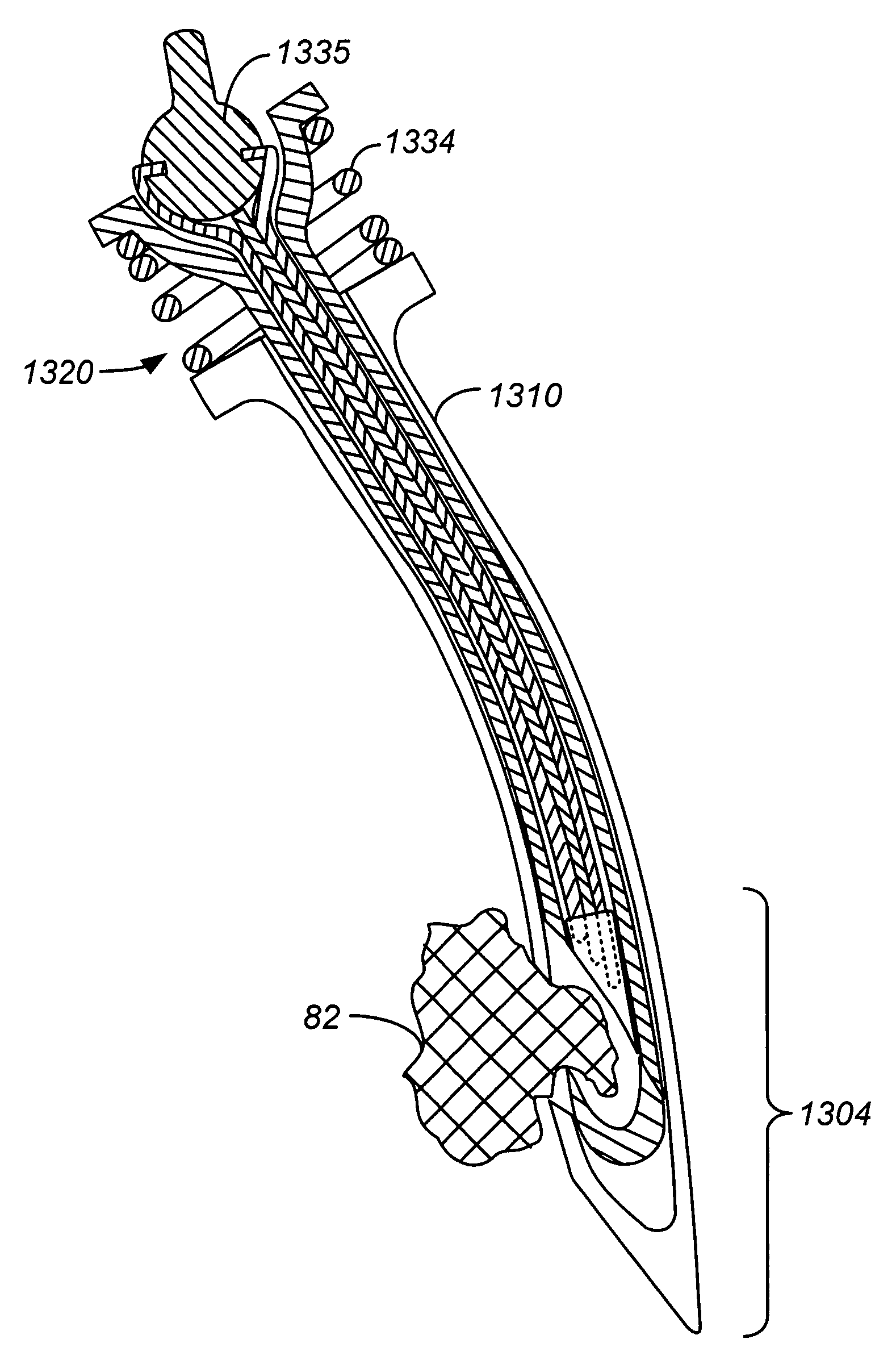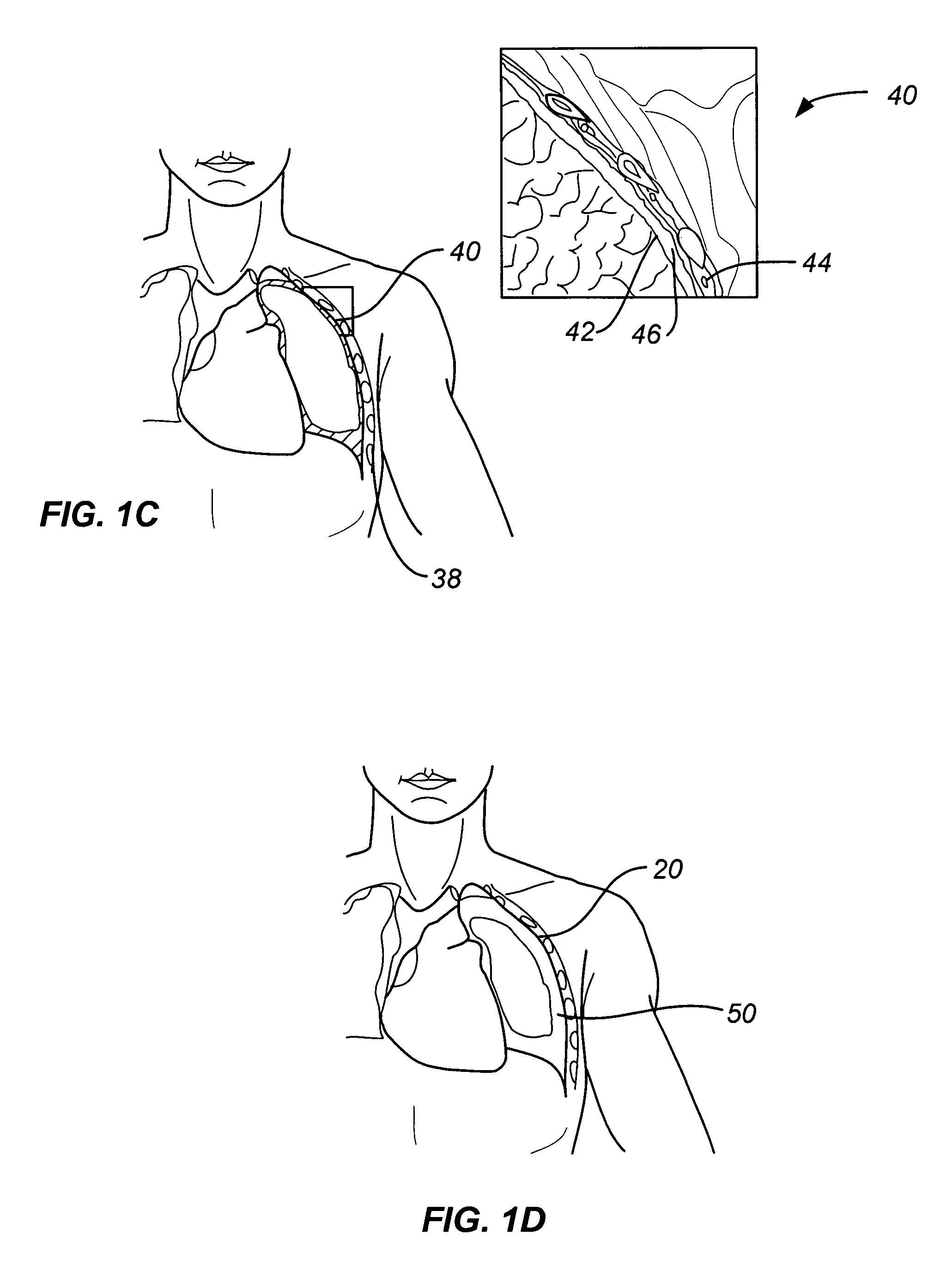Steerable device for accessing a target site and methods
a target site and ct scan technology, applied in the field of ct scans for spiral ct scans, can solve the problems of not even recommending screening for persons of high risk, not knowing whether the use of spiral ct scans improves the prognosis for long-term survival, and many are acute and deadly. , to achieve the effect of convenient and quick us
- Summary
- Abstract
- Description
- Claims
- Application Information
AI Technical Summary
Benefits of technology
Problems solved by technology
Method used
Image
Examples
Embodiment Construction
[0080]As noted above, the present invention is suitable for use in percutaneously accessing a target site within a body, as well as traversing tissue and lumens between an access point on the body and a target site in the body. The invention is also suitable for accessing a target site through body lumens such as the trachea and the vasculature. A target site can be located in any anatomic location in the body. Typically a site is identified by the physician or radiologist and the tissue, cells and / or fluid, or other material at that site, is then identified as target material and selected or targeted for access. Thus, for example, the target tissue, cells or fluid can be the target material identified for access from: brain, heart, liver, kidney, thyroid, lung, pancreas, intestine, uterine, ovary, prostate, lymph, spleen, skin, biliary, parathyroid, pituitary, adrenal gland, mediastinum, bladder, connective tissue, breast, gastrointestinal tract, joints, muscle, etc. Additionally, ...
PUM
 Login to View More
Login to View More Abstract
Description
Claims
Application Information
 Login to View More
Login to View More - R&D
- Intellectual Property
- Life Sciences
- Materials
- Tech Scout
- Unparalleled Data Quality
- Higher Quality Content
- 60% Fewer Hallucinations
Browse by: Latest US Patents, China's latest patents, Technical Efficacy Thesaurus, Application Domain, Technology Topic, Popular Technical Reports.
© 2025 PatSnap. All rights reserved.Legal|Privacy policy|Modern Slavery Act Transparency Statement|Sitemap|About US| Contact US: help@patsnap.com



